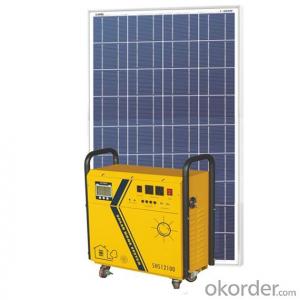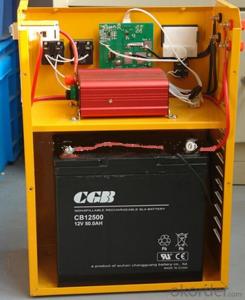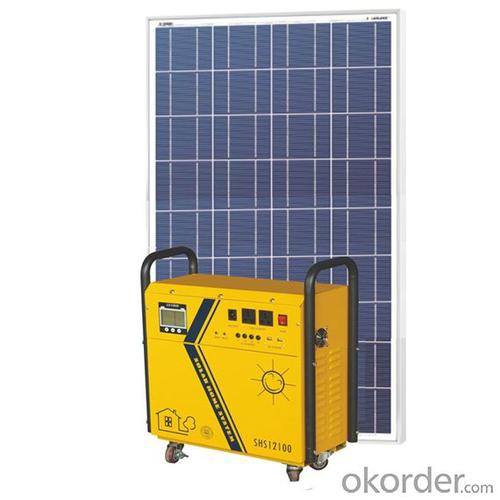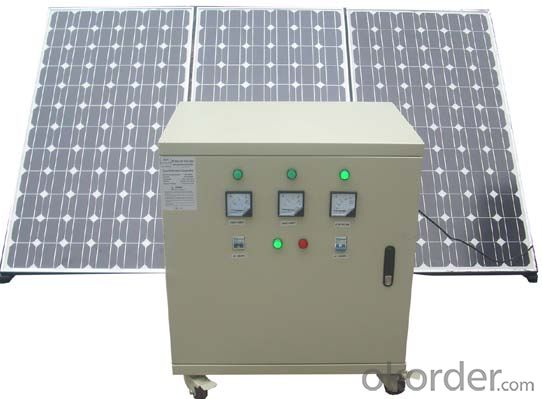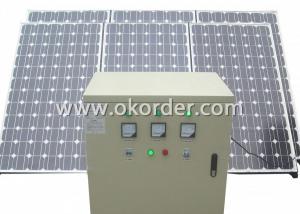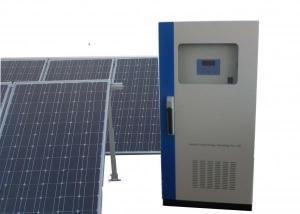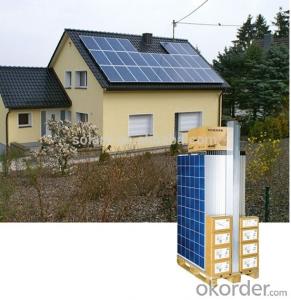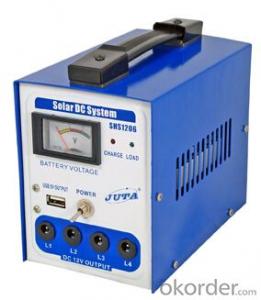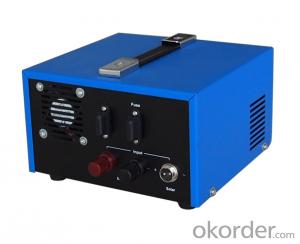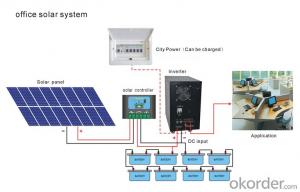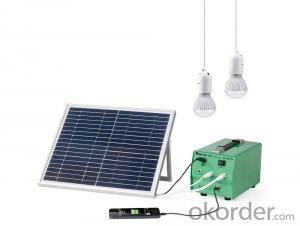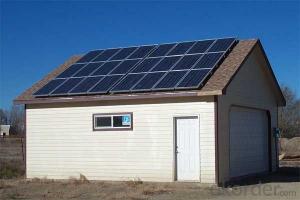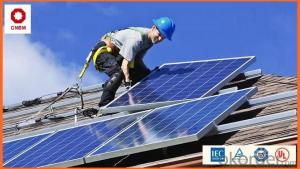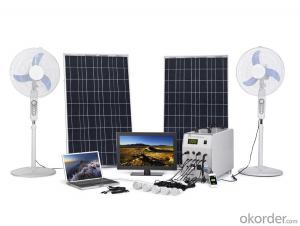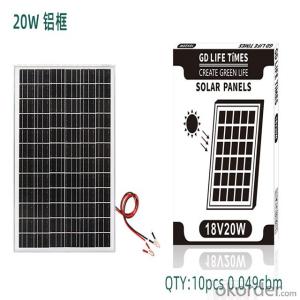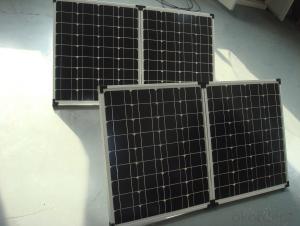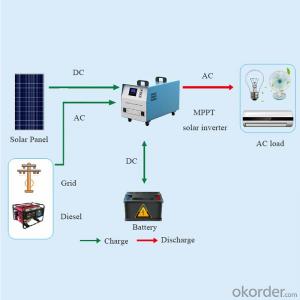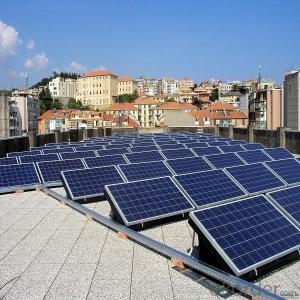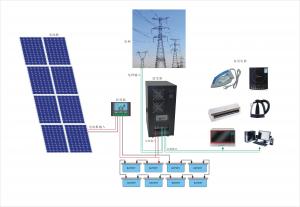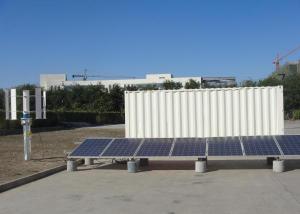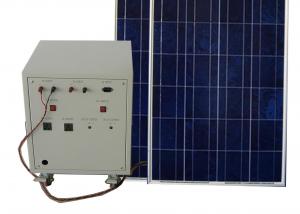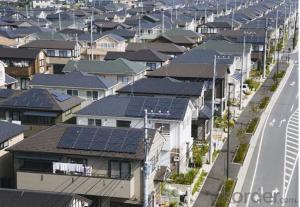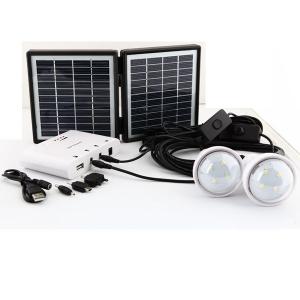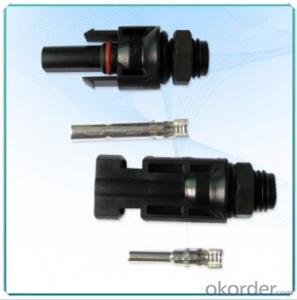Portable Solar Power Systerm Kits/Camping Kits Home Use 2000W Solar System
- Loading Port:
- Shanghai
- Payment Terms:
- TT or LC
- Min Order Qty:
- 2000 watt
- Supply Capability:
- 200000 watt/month
OKorder Service Pledge
OKorder Financial Service
You Might Also Like
| Specifications |
| 1.Solar panel: 200W |
| 2.Lead acid Battery: 100Ah |
| 3.Inverter: output 600W |
| 4. Self design manufacturer |
Portable Solar Power Systerm Kits/camping kits home use 2000w solar system
RODUCT DSCRIPTION
1. This is an off-gird solar power system, designed to provide stable and reliable electricity to homes or communities without access to grid electricity or to those regions where are short of power or even without power.
2. This solar power system is convenience to move with handle and wheels.
3. The full-feature LED/LCD display features system monitoring so that you always know how much power reserve is left in the batteries, allowing you to plan accordingly.
4. It is easy to set-up with reliable performance, making it ideal for situations where emergency power is required.
5. It is an ideal and reliable energy source for a wide variety of applications, ranging from lighitng, radios, fans, televisions, computers, refrigerator.
6. The USB port is compatible with all 5V-USB charged devices.
7. It can also act as a back-up power source during emergency situations.
8. Adapt the solar power system to meet your requirements, OEM is acceptable.
Portable Solar Power Systerm Kits/camping kits home use 2000w solar system
| Technical Data | |
| MODEL: Solar Power System SHS12100 | |
| 1. Plug & Play Integrated Power Box | |
| Display | LED screen |
| Controller | Build-in, 15A/12V, PWM |
| Battery | 200Ah/12V, Lead-acid |
| Inverter | Build-in, 600W pure since wave |
| Outlet | DC outlets12V/1A x 4 |
| AC outlets 220V/ 600W x 2 | |
| USB port | 5V/1A x 2 |
| Grid charging port | 15V/5A x 1 |
| Rating charging current | 15A |
| Rated working voltage | 12V |
| Low voltage protection | 10.7V |
| Low voltage recovery | 12.6V |
| Float charging voltage | 14V |
| 2. Solar Panel | |
| Power | 200W |
| Cell type | Monocrystalline silicon |
| Number of cell | 72pcs |
| Vmp | 18V |
| Imp | 11.1A |
| Power tolerance | ±5% |
| Voc | 22.32V |
| Isc | 11.54A |
| Operating temperature | -40°c to 80°c |
| Size | 1580*808*35mm |
| Weight | 13kg |
| 3. Other accessories (Optional) | |
| LED Bulb | 12V/5W x2pcs |
| E27 4m's cable with Switch & Socket | |
| AC charger | 1PC |
| Cable for LED bulbs | 1 by 2 Extension Cable 5 meters x 1 |
| Cable for Solar Panel | 10 meters for 4m² space |
FUNCTIONS
THE POWER CASE FUNCTIONS OF SOLAR POWER SYSTEM
1.Battery charging function
2.Low voltage disconnection function(LVD)
3.High voltage disconnection function(HVD)
4.Electronic overload protection
5.Short circuit protection
6.High temperature protection
7.Indicator got working status
8.DC 5V and DC 12V output
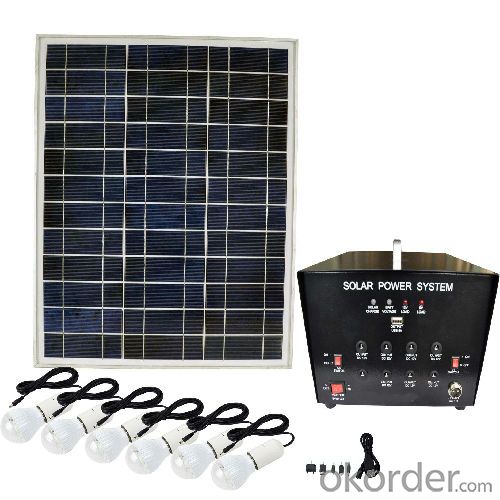
RELATED PRODUCTS
| System Type | AC/DC Off Gird Solar Power System | ||||
| Model | SHS1250 | SHS1265 | SHS12100 | SHS12200 | SHS24200 |
| Solar Panel | 100W | 150W | 200W | 2x200W | 2x300W |
| Battery | 50Ah | 65Ah | 100Ah | 200Ah | 2x200Ah |
| Output Power | 300W | 500W | 600W | 1000W | 1500W |
| Modified wave | Modified wave | Pure sine wave | Pure sine wave | Pure sine ware | |
| Carton Size | 300*180*470mm | 400*180*470mm | 525*248*640mm | 615*302*640mm | 600*550*420mm |
| Applicable Scope | TV, Fan, Radio, Refrigerator, Air-conditioner | ||||
- Q: Can a solar energy system be installed in a desert environment?
- Solar energy systems can indeed be installed in desert environments. In fact, deserts are considered optimal for solar energy installations due to their ample sunlight and minimal cloud cover. The abundance of solar radiation in deserts makes them exceptionally efficient for generating electricity with solar panels. Additionally, the vast open spaces in deserts offer plenty of land for large-scale solar power plants. Moreover, the arid conditions in deserts contribute to the longevity and durability of solar panels, as they are less susceptible to damage from moisture or extreme weather conditions. All in all, the combination of wide open spaces, high solar radiation, and dry climate render deserts an ideal setting for installing solar energy systems.
- Q: Can a solar energy system be installed on any type of roof?
- Yes, a solar energy system can be installed on any type of roof. Whether it is a flat roof, sloped roof, metal roof, shingle roof, or even a tile roof, there are solar installation options available for each type. However, the installation process may vary depending on the roof type. For example, flat roofs may require mounting systems that tilt the solar panels to optimize their exposure to the sun, while sloped roofs may require adjustable racking systems to ensure proper alignment. Additionally, the condition and structural integrity of the roof should be assessed before installation to ensure it can support the weight of the solar panels. Overall, while the specific installation methods may vary, solar energy systems can indeed be installed on any type of roof.
- Q: How does the angle of solar panels affect their performance?
- The performance and overall efficiency of solar panels are greatly influenced by their angle. Various factors, including geographical location, time of year, and the specific application, determine the ideal angle at which solar panels should be positioned. When solar panels are correctly angled, they can capture the maximum amount of sunlight throughout the day. The angle directly impacts the amount of direct sunlight that reaches the panels, thus affecting their energy output. If the angle is too steep, the panels may not receive direct sunlight, resulting in reduced energy production. Conversely, if the angle is too shallow, the panels may not capture as much sunlight, leading to lower efficiency. Generally, solar panels are installed at an angle equal to the latitude of the location. However, this may not always be the most optimal angle. For instance, in regions with abundant sunlight year-round, a slight tilt towards the equator could enhance the panels' performance. Seasonal adjustments may also be required to account for the changing position of the sun throughout the year. This can be achieved by manually adjusting the angle or utilizing solar tracking systems that automatically follow the sun's path. It is important to note that the angle is not the only factor affecting the performance of solar panels. Shading, temperature, and the quality of the panels themselves also influence their efficiency. Therefore, it is crucial to conduct a comprehensive analysis and seek professional advice to determine the optimal angle for solar panels. This ensures maximum energy production and a favorable return on investment.
- Q: Can solar energy systems be used in areas with limited access to solar energy regulations and policies?
- Yes, solar energy systems can still be used in areas with limited access to solar energy regulations and policies. While regulations and policies can help promote and facilitate the adoption of solar energy, they are not necessarily a prerequisite for the installation and operation of solar panels. As long as there is sufficient sunlight available, solar energy systems can still be utilized effectively in areas without comprehensive regulations and policies in place. In such scenarios, individuals or organizations may need to navigate any existing regulatory frameworks or work towards implementing suitable policies to ensure the smooth functioning and integration of solar energy systems.
- Q: Can solar energy systems be used for powering recycling facilities?
- Yes, solar energy systems can definitely be used for powering recycling facilities. Solar energy is a renewable and clean source of power that can be harnessed using photovoltaic (PV) panels or solar thermal systems. These systems convert sunlight into electricity or heat, which can then be utilized to power various operations within a recycling facility. The electricity generated through solar panels can be used to power the machinery and equipment required for recycling processes, such as conveyors, sorting machines, crushers, and compactors. Additionally, solar energy can also be used to power lighting systems, ventilation, and heating/cooling systems, ensuring a sustainable and efficient operation of the facility. Using solar energy for powering recycling facilities offers several advantages. Firstly, it reduces reliance on traditional fossil fuel-based electricity, thereby decreasing carbon emissions and mitigating environmental impact. Secondly, solar energy systems provide a stable and predictable source of power, reducing the vulnerability to power outages or price fluctuations. Furthermore, solar power can help recycling facilities save on energy costs in the long run, as the initial investment in solar panels can be offset by the reduced electricity bills over time. In conclusion, solar energy systems are a viable and environmentally-friendly option for powering recycling facilities. By harnessing the power of the sun, these facilities can operate sustainably, reduce their carbon footprint, and contribute towards a cleaner and greener future.
- Q: Can solar energy systems be used for powering off-grid telecommunications networks?
- Yes, solar energy systems can be used for powering off-grid telecommunications networks. Solar panels can generate electricity from sunlight, which can be stored in batteries for later use. This stored energy can then be used to power telecommunication equipment such as cell towers, antennas, and communication devices, ensuring reliable and sustainable power supply in remote areas or during power outages.
- Q: How do solar energy systems affect the installation of satellite dishes?
- Solar energy systems can potentially impact the installation of satellite dishes by obstructing the line of sight between the satellite and the dish. This obstruction can cause signal interference or loss, affecting the satellite dish's performance. However, with proper planning and positioning of both the solar panels and the dish, it is possible to minimize any potential conflicts and ensure optimal functioning of both systems.
- Q: What is the role of solar panel cleaning in maintaining optimal performance?
- The role of solar panel cleaning in maintaining optimal performance is crucial. Regular cleaning helps to remove dust, dirt, and other debris that can accumulate on the panels over time, which can significantly reduce their efficiency. By keeping the panels clean, more sunlight can be absorbed and converted into electricity, resulting in higher energy production and overall better performance. Additionally, regular cleaning also helps to prevent long-term damage and prolong the lifespan of the solar panels, ensuring they continue to operate at their best for years to come.
- Q: Can a solar energy system withstand extreme weather conditions?
- Yes, a solar energy system can withstand extreme weather conditions. Solar panels are designed to be durable and are built to withstand a range of weather conditions, including extreme heat, cold, wind, rain, and snow. They are made with tempered glass and are often tested to ensure they can withstand hailstorms or heavy snow loads. Additionally, solar panels are typically installed securely to withstand strong winds and are designed to be resistant to corrosion. Overall, while extreme weather conditions can have some impact on solar energy production, solar energy systems are built to withstand and continue operating effectively in a variety of weather conditions.
- Q: How do solar energy systems impact property value?
- Solar energy systems can have a positive impact on property value by increasing its market appeal and desirability. Research suggests that homes equipped with solar panels tend to sell faster and at higher prices compared to similar homes without solar installations. Additionally, solar energy systems offer potential cost savings on electricity bills, making the property more attractive to potential buyers.
Send your message to us
Portable Solar Power Systerm Kits/Camping Kits Home Use 2000W Solar System
- Loading Port:
- Shanghai
- Payment Terms:
- TT or LC
- Min Order Qty:
- 2000 watt
- Supply Capability:
- 200000 watt/month
OKorder Service Pledge
OKorder Financial Service
Similar products
Hot products
Hot Searches
Related keywords
